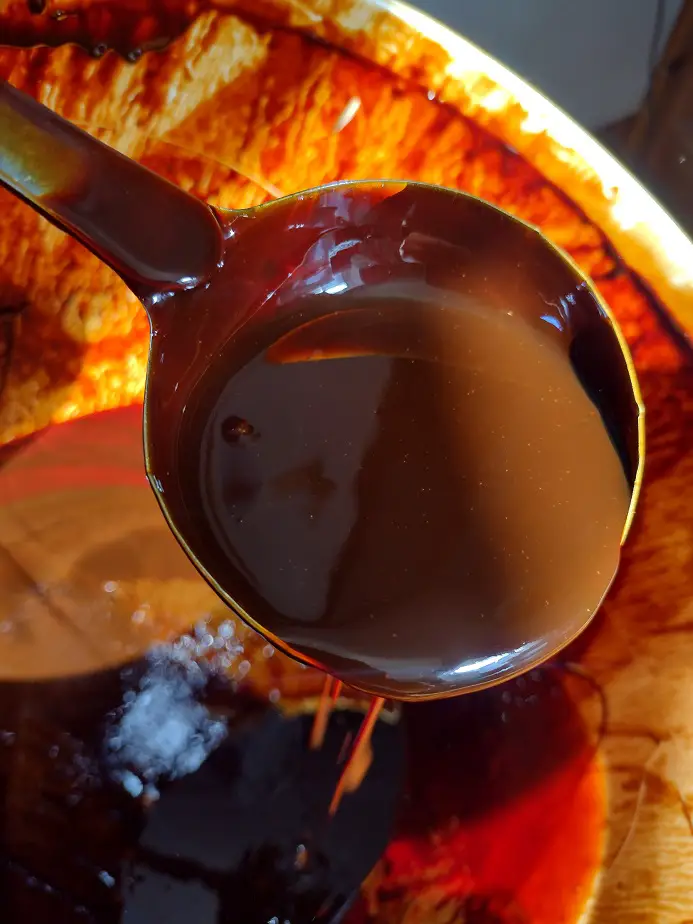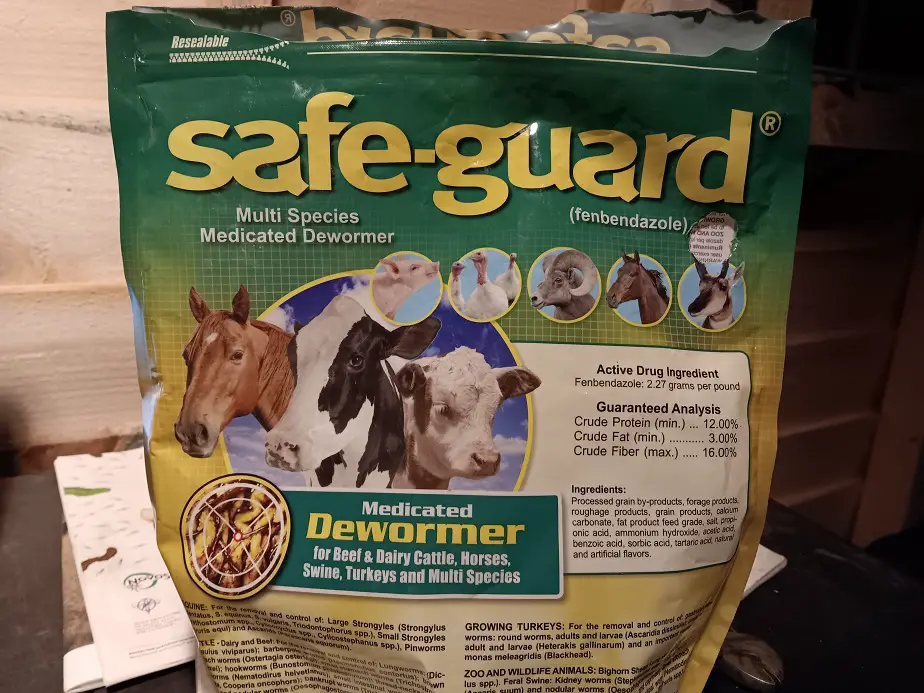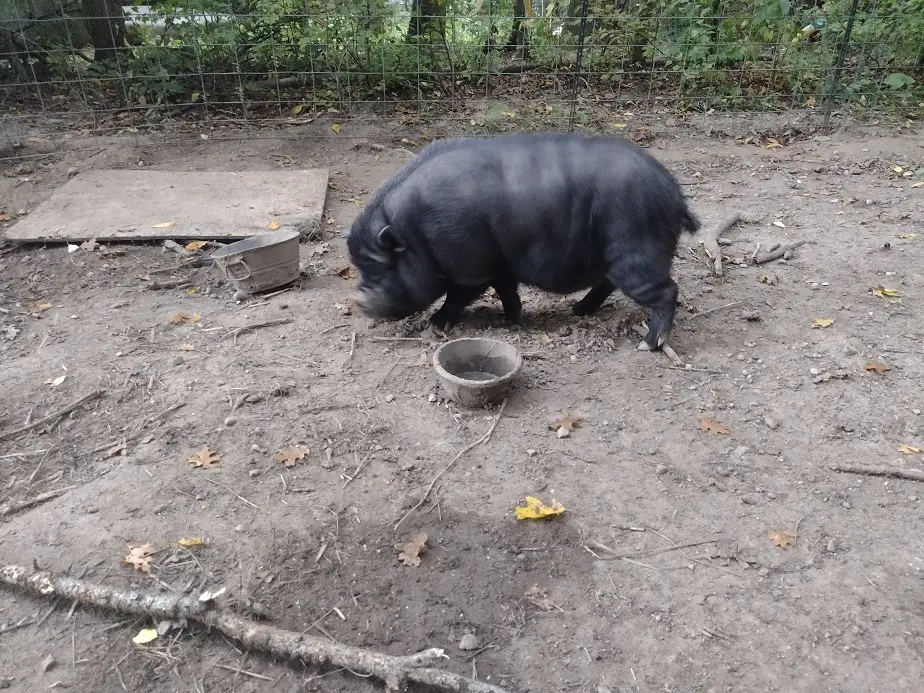I raised a pig on sweet feed. It worked, but could have been better. Here’s what we learned.
Pigs can eat sweet feed. It’s often higher in fiber and lower in protein than a good pig feed, but it will not harm pigs. You won’t see a high growth rate if feeding pigs a horse or cattle sweet feed. A high-protein sweet feed is good for pigs, especially piglets. Adding molasses to pig feed helps them grow.
Let’s talk about different sweet feeds and how molasses can actually help pigs.

Is Sweet Feed Good For Pigs?
Most sweet feeds are made as a pasture replacement for grazing animals. They are generally low protein, have a lot of fiber, and have a good bit of added mineral salts. That’s not necessarily a problem for pigs, but it can be. The biggest issue is protein. Sweet feeds are almost all 12 percent protein.
There are two types of sweet feeds. The first is sweet grains, which are grains rolled in molasses. The second is a pelleted feed with molasses that may have cracked grains added. The all-grain type is a much higher energy feed but lower in amino acids. The pelleted type has more fiber but more amino acids.
The pelleted type is giong to be better, as long as it has some brewery grains, sometimes listed as middlings or processed grain products.
The protein in sweet feed mainly comes from whole grains (around 10 percent protein) and used brewery grain (around 16 percent protein). Grains are fine for pigs but are lacking in essential amino acids, particularly lysine. The brewery grains have a pretty good amount of protein and plenty of lysine for pigs.
They are generally formulated in a lower protein mix, sometimes along with roughage products like chopped straw or wheat hulls. The result is an industry standard that’s low in the amino acids that pigs need to grow well. While some breeds of pigs will handle that, others will not.
Pasture-type pigs may do alright on that as a supplement to the pasture diet. Breed like the Guinea Hog, Kunekune, and Pot-bellied Pig can do better on a lower protein diet. The larger commercial hogs need more protein, especially when young.
Pig feed is usually 14-18 percent protein with 1 to 1.5 percent lysine. Most sweet feeds have half that much lysine. Generally, pigs are started with an 18 percent protein feed after weaning (2 months old) and that’s reduced by 1 percent a month, up to 6-7 months old, as their growth slows a bit.
The protein content in regular sweet feed is more suitable for pigs older than 1 year old, after their growth spurt. Lacking in protein early on causes a pig to be stunted and it will not catch up later.

One thing you need for pigs, no matter your raising system, is a parasitic worm treatment. The best swine dewormer is Fenbendazole. It’s known by the brand name Safeguard. Safeguard is available as a medicated corn/alfalfa pellet. It’s the only way I can worm my pigs since they won’t stand still for an injection of Ivermectin. It’s easy and cheap.
- There is a stronger pellet for swine only. Here it is on Amazon
- There is a weaker pellet for general barnyard livestock, including swine. Here it is on Amazon.
I use the multi-species version because it’s what’s available in my local store and I can use it for my chickens too. It’s the most effective swine wormer and the easiest to administer. I use it on all weaned piglets and adults twice a year. Don’t go without it.

Will Sweet Feed make my Pigs Fat?
Sweet feed doesn’t make pigs fat. I raised pigs on sweet feed and they weren’t fat. even though it has added molasses, which is 60 percent sugar, it is still usually a low-calorie feed. Molasses itself can be very useful as a feed ingredient for pigs for increasing the energy and palatability of certain feeds.
Molasses has the same calories pound for pound as grains. Adding 10 percent molasses by weight to a pig feed is shown to increase daily growth and have little effect on backfat. Molasses has been fed to pigs ever since it could be produced cheaply.
In the Philippines, it’s still common for farmers to buy fresh molasses from sugarcane plantations to mix with pig feed. It’s used to reduce the need for grains, which are more expensive there. The issue is that molasses has no vitamins or protein. At least grains have a little.
To deal with that, they add in chopped leaves and grasses. Tree leaves are generally quite high in protein and grass is very high in vitamins. Another way is to ferment grains, which increases the protein and vitamins, then add molasses to up the calories.
Molasses is also added to things to make pigs want to eat them more, to increase their palatability. Some things, usually certain vegetation, are not liked by pigs even though they are good for them. Molasses can make pigs want to eat more of their regular feed too, which is generally seen as a good thing.
The type of pigs we raise, lard pigs, are on a limited diet so they don’t get too fat. With commercial pigs, the question is always how to get them to eat more. Well, adding a bit of molasses to their feed often does just that. It makes them want to eat just a little more.
A high protein sweet feed is exceptionally good for piglets. Adding up to 20 percent molasses by weight to piglet feed has been shown to increase growth with no negative results.
I make our own sweet feed for pigs, although It’s not fed daily. I get bulk molasses cheap from the local feed store and add it to their feed at a rate of 10 to 20 percent by weight. I mix it in the liquid-fermented feeds we make for our pigs. The molasses adds both calories and selenium, an often lacking mineral.
Related Articles:

